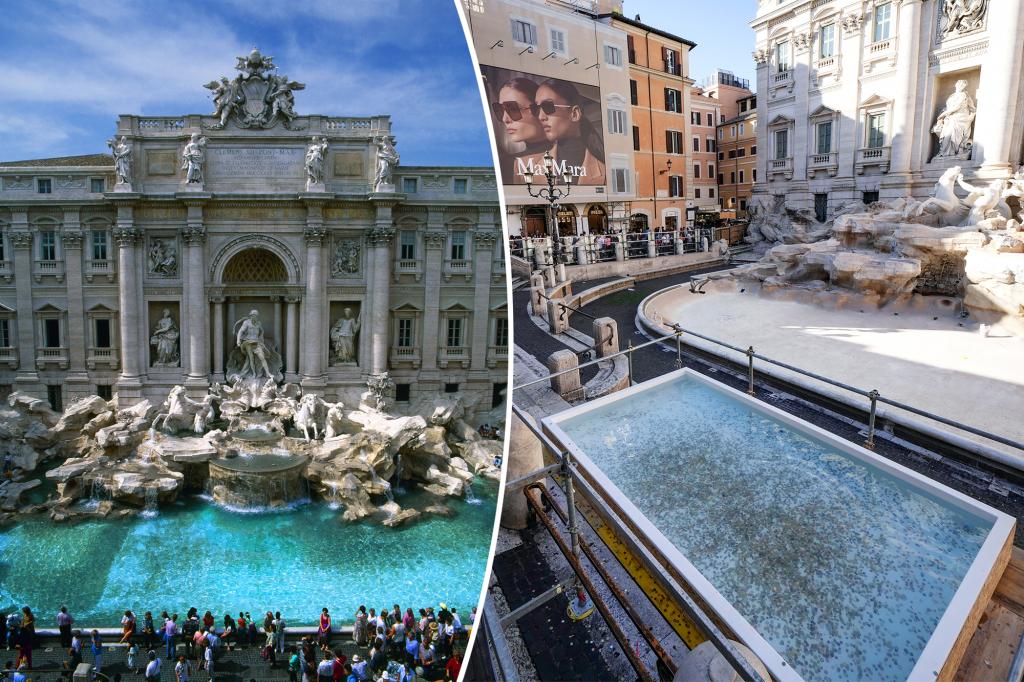The Trevi Fountain in Rome, a popular tourist attraction known for visitors tossing coins into its waters, has been closed for construction work. In place of the fountain, a temporary wishing well has been set up, much to the dismay of tourists who hoped to have the traditional experience. The closure and future planned fee for visitors are part of an effort to manage tourism in Rome and prevent overcrowding and damage to the historic site by the millions of annual visitors it receives.
Officials are hoping that by charging a fee, they can better control the number of visitors to the Trevi Fountain and preserve the experience for both tourists and local residents in Rome. The fee, expected to be around $2, will help in managing the situation and preventing chaos in the city center. Visitors are currently only able to view the site from an elevated walkway before tossing coins into a temporary pool, but once construction is complete, timed reservations will be required to access the best viewing areas, marking the first attempt to regulate the site since its construction in 1732.
The sudden closure and construction work at the Trevi Fountain has sparked criticism on social media, with some new nicknaming the fountain as the “Trevi swimming pool.” Visitors who had traveled long distances to see the iconic site were disappointed by the change, comparing it to a municipal swimming pool rather than an historic fountain. The backlash highlights the challenge of managing tourist sites and balancing the experience for visitors with the need to preserve and protect the sites for future generations.
The closure of the Trevi Fountain for construction work and the planned fee for visitors is part of a larger trend in popular Mediterranean destinations to combat overtourism. Countries such as Spain, Italy, and Greece are grappling with the challenges of managing large numbers of tourists and ensuring that their historic sites are not damaged or overwhelmed. For example, in Mykonos and Santorini, a visitor’s tax of $22 may soon be implemented for cruise ship passengers to help manage the impact of tourism on these popular destinations.
The debate over how to manage tourism and preserve historic sites like the Trevi Fountain is ongoing, with officials and locals grappling with the best way to balance the needs of visitors with the need to protect these iconic landmarks. While the closure and construction work may inconvenience some tourists in the short term, the long-term goal is to ensure that future visitors can continue to enjoy the Trevi Fountain and other historic sites in Rome without causing harm or disruption. By implementing fees and other measures, officials hope to strike a balance between tourism and conservation that will benefit both visitors and local residents in the years to come.















